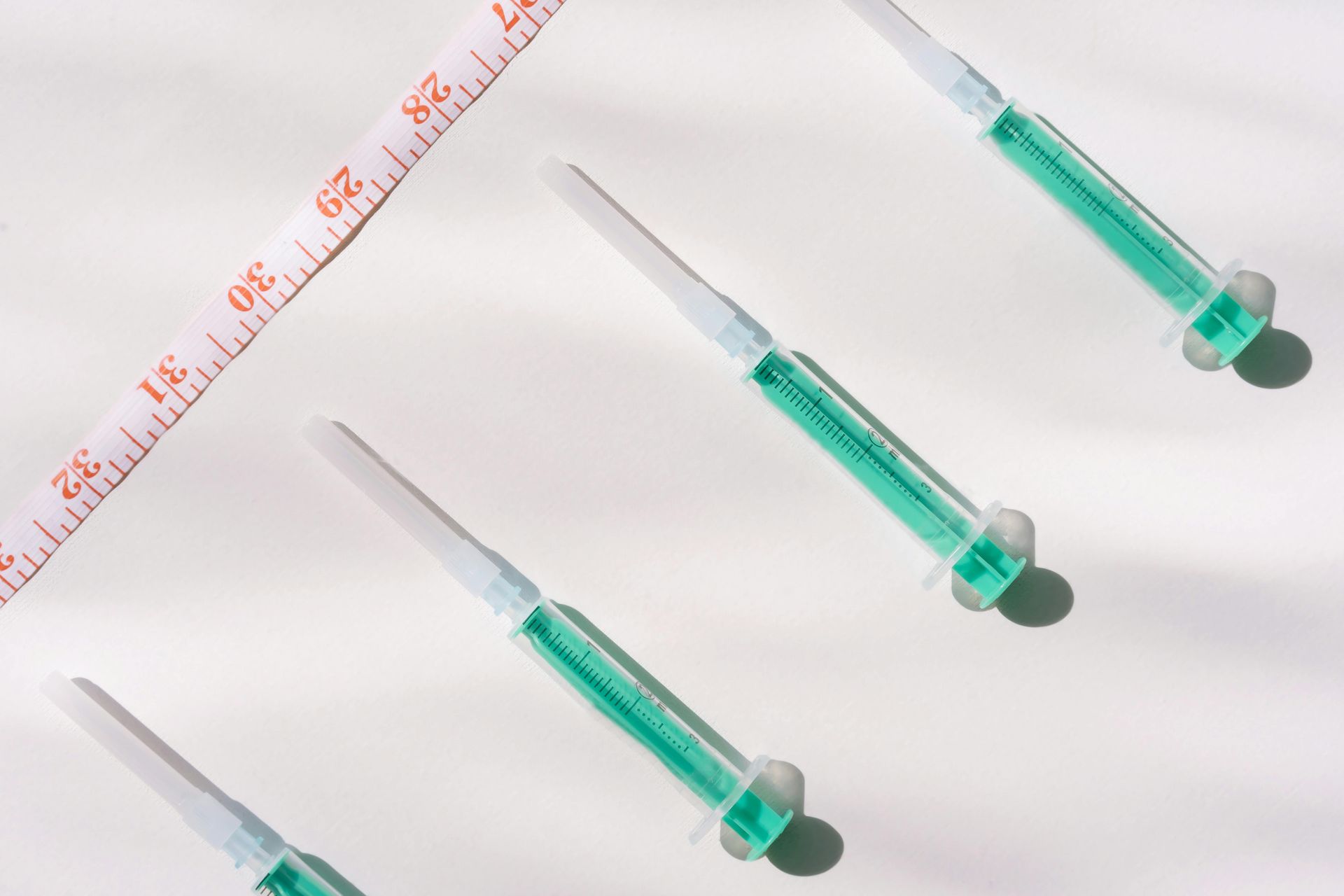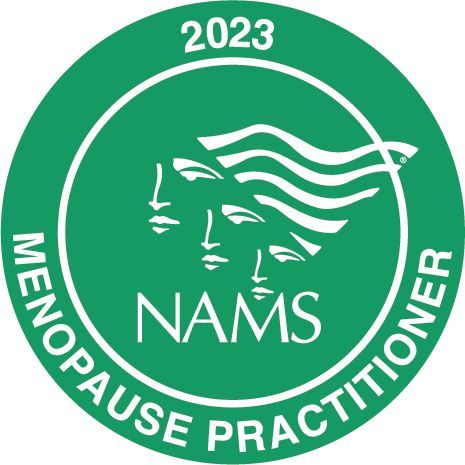The Impact of Hormonal Changes on Gut Health – and Science-Backed Strategies for Natural Healing.

For years, I struggled with bloating, fatigue, joint pain, and unpredictable mood swings-symptoms I later learned were tied to my gut and hormones. After countless dead ends, I discovered how deeply connected these systems are and committed to a science-backed protocol: removing inflammatory triggers, repairing my gut lining, and rebalancing my microbiome. The results were life-changing. My energy returned, my digestion stabilized, and my hormones finally found harmony. This blog isn’t a comprehensive guide to every gut-hormone issue (there’s no one-size-fits-all solution), but it’s the evidence-based roadmap that worked for me - and can empower you to start your own path to gut-healing. Let’s get started!
What Is the Microbiome?
Your gut houses trillions of bacteria, viruses, and fungi collectively known as the microbiome, which play essential roles in digestion, germ defense, and hormone regulation. Imagine it as a vibrant city where both beneficial and harmful microbes coexist. When in harmony, they promote your health; however, an imbalance, or dysbiosis, can lead to issues like weight gain, fatigue, and hormonal disturbances.
How Menopause Can Wreck Your Gut—And What You Can Do About It
Menopause does more than ignite hot flashes; it alters your gut microbiome, establishing a troubling cycle of hormonal imbalance, inflammation, and bothersome symptoms. Here’s what takes place beneath the surface:
1. Hormones in Freefall, Gut in Chaos
The Problem
- Estrogen crash:
- Reduces microbiome diversity, favoring inflammation-linked bacteria (Prevotella, Bacteroides) over beneficial strains (Lactobacillus, Firmicutes)
- Disrupts the estrobolome, a collection of gut bacteria that metabolizes estrogen through β-glucuronidase enzymes, by recycling inactive estrogen into its active form; when this process is disrupted, it initiates a downward spiral of hormone imbalance.
- Progesterone drop:
- Slows gut motility, causing bloating, constipation, and IBS-like symptoms
2. The “Male Shift” in Your Gut
Postmenopausal microbiomes start resembling men’s guts
- Fewer fiber-fermenters (Firmicutes, Ruminococcus) → less short-chain fatty acids (SCFAs) for gut lining repair
- More pathogens (Prevotella, Dorea) linked to obesity, inflammation, and metabolic disease
Result:
A leaky gut lets toxins into your bloodstream, fueling inflammation that worsens hot flashes, joint pain, and brain fog.
3. The Estrobolome Crisis
What’s Happening:
Your gut’s estrogen-recycling bacteria (estrobolome) are declining. These bacteria produce enzymes that reactivate estrogen for your body to reuse.
The Fallout:
- Less active estrogen → worse hot flashes, bone loss, and vaginal dryness
- More inflammation → weight gain, insulin resistance, and heart disease risk
Why It Matters:
An unhealthy estrobolome sabotages your body’s ability to recycle estrogen effectively, trapping you in a vicious cycle of hormone chaos and gut inflammation that worsens symptoms and disrupts signaling - ensuring you remain trapped in a continuous decline! For example, postmenopausal women with dysbiosis show lower free estrogens and higher menopausal symptoms
Is Leaky Gut a Real Condition?
Yes, increased intestinal permeability (often called "leaky gut") is a real phenomenon observed in conditions like Crohn’s disease, but it’s not a standalone diagnosis. During menopause, hormonal shifts and stress amplify this vulnerability:
- Estrogen decline thins the gut lining, allowing toxins to leak into the bloodstream → inflammation.
- Stress hormones (cortisol) further damage the gut barrier, worsening those IBS-like symptoms.
Symptoms Linked to Gut Dysfunction in Menopause
Dysbiosis (Unbalanced Gut):
- Bloating, constipation, diarrhea
- Sugar cravings, weight gain
- Brain fog, mood swings
Leaky Gut:
- Joint pain, skin rashes
- Fatigue, headaches
- Food sensitivities (e.g., gluten)
Key Evidence:
- Menopause does disrupt gut integrity: Hormonal shifts do reduce microbiome diversity and weaken the gut lining.
- Stress + hormones: Cortisol spikes during menopause does worsen gut permeability, creating that cycle inflammation and symptoms.
Medical Consensus:
So, while "leaky gut syndrome" isn’t an official diagnosis, increased intestinal permeability is recognized in diseases like IBD and may contribute to systemic inflammation during menopause.
Risks of Gut-Hormone Imbalances
1. Estrogen Chaos
Unbalanced gut bacteria mess with your estrobolome—the gut’s estrogen-recycling team. This can cause PMS, worse hot flashes, and raise risks for endometriosis or breast cancer.
2. Sluggish Thyroid
Poor gut health blocks your body from activating thyroid hormones (T4→T3), leading to fatigue, weight gain, and cold sensitivity.
3. Inflammation Overload
A leaky gut lets toxins into your blood, spiking inflammation and stress hormones (cortisol). This leads to burnout, poor sleep, and even more gut damage.
4. Blood Sugar Spikes
Bad gut bacteria make fewer "good" fats (SCFAs), raising risks for type 2 diabetes and fatty liver disease.
5. Autoimmune Triggers
Leaky gut can let food/bacteria into your bloodstream, sometimes triggering Hashimoto’s, rheumatoid arthritis, or celiac disease. (Not everyone gets this, and autoimmune diseases are complex in nature, but there is a risk involved).
6. Weaker Bones
Gut inflammation blocks calcium absorption and speeds bone loss, raising osteoporosis risk.
7. Mood Swings
90% of your “happy hormone” (serotonin) is made in the gut. Poor gut health = less serotonin = higher anxiety/depression.
8. PCOS & Cysts
Toxins from a leaky gut (LPS) make your body resist insulin, worsening hormone imbalances and ovarian cysts.
Why It Matters:
Your gut isn’t just digesting food - it’s managing hormones, mood, and immunity. Fixing your gut can break these risky cycles!
Key Evidence:
Gut dysbiosis directly impacts estrogen, thyroid, insulin, and cortisol balance, driving systemic health risks!
How Are Gut Health, Estrogen, and Infections Are Connected?
1. The Gut-Vagina-Bladder Connection
- Pathogens on the move: Harmful bacteria originating from an unhealthy gut (such as E. coli) can migrate to your vagina and bladder, leading to infections.
- Leaky gut implications: A "leaky" gut that allows germs into the bloodstream triggers widespread inflammation, compromising your vagina's natural defenses.
2. Low Estrogen's Triple Threat
- Vagina: Decreased estrogen levels diminish beneficial bacteria (Lactobacillus), elevate vaginal pH, and promote the growth of harmful bacteria → resulting in yeast infections and bacterial vaginosis.
- Bladder: Weakens bladder muscles, making it easier for germs to enter → contributing to urinary tract infections (UTIs).
- Gut: Low estrogen disrupts the delicate balance of gut bacteria responsible for hormone recycling, further deteriorating gut health.
3. The Interconnectedness of It All
Domino effect:
- An unhealthy gut leads to the proliferation of harmful bacteria, resulting in infections of the vagina and bladder.
- Low estrogen levels result in a lack of Lactobacillus protection, facilitating easier bacterial invasion.
Essential Issues to Monitor
- Vagina: Dryness, itching, burning, frequent infections, discomfort during intercourse.
- Bladder: UTIs, frequent urination, burning sensation.
Consider it this way: Your gut, vagina, and bladder function as a cohesive unit. If one becomes compromised (due to low estrogen or harmful bacteria), the others may also falter! Using low-dose, localized vaginal estrogen alongside efforts to enhance gut health can significantly impact this situation!
What Can You Do?
Step 1: Dietary & Lifestyle Adjustments
- Consume 30 or more different plant varieties each week: Fiber nourishes beneficial bacteria (think berries, lentils, and nuts).
- Steer clear of triggers: Limit sugar, alcohol, processed foods, and potential food sensitivities like gluten and dairy.
- Manage stress effectively: Practices such as yoga, meditation, and walking in nature can help lower cortisol levels, which negatively impact gut health.
- Consider Fasting or Time-Restricted Eating (TRE): These approaches help reduce gut permeability by allowing the gut to rest and promoting beneficial bacteria. Aim for 12 to 16 hour fasting windows (for example, fasting from 7 PM to 10 AM), aligning with your circadian rhythms. Explore various fasting methods to discover what suits you best. However, avoid prolonged fasting if you are underweight or have a history of eating disorders; if considering prolonged fasting, consult your healthcare provider first.
Step 2: Gut-Healing Supplements
- L-glutamine: Supports gut lining repair and reduces inflammation.
- Zinc (carnosine preferred): Strengthens intestinal tight junctions and fights harmful bacteria. It's important to note, when taking zinc in doses greater than 30 mg/day, it’s advisable to pair it with 1–2 mg of copper (taken separately for better absorption) to prevent deficiency.
- Omega-3s: Anti-inflammatory; promotes mucosal healing.
- Probiotics (Lactobacillus, Bifidobacterium, S. boulardii): Restore microbial balance and calm inflammation. Probiotic needs vary- Lactobacillus helps estrogen metabolism, while S. boulardii targets yeast overgrowth. Guidance from your clinician is helpful!
- Vitamin D: Optimize levels (testing recommended) to improve gut diversity and barrier function. Vitamin D needs vary by baseline levels, geography, and skin tone. Vitamin D levels between 50–70 ng/mL correlate with better gut health, however its best to work with a clinician to optimize yours.
- Collagen peptides: May aid gut repair and reduce bloating (human studies ongoing).
While key supplements like L-glutamine, zinc, and targeted probiotics can repair gut lining and reduce inflammation, it's always bests to consult your own healthcare provider to tailor supplements and doses to your needs - what works for one person may harm another!
4-Step Gut Healing Protocol (Evidence-Based & I used myself)
1. Remove Triggers
- Cut: Processed foods, sugar, alcohol, gluten/dairy (if sensitive).
- Test (if needed): Stool tests identify harmful bacteria/parasites. Use herbs like oregano or berberine only if pathogens are found.
2. Repair the Lining
- Supplements: L-glutamine (gut repair), zinc (tightens junctions), omega-3s (reduces inflammation), vitamin D (boosts gut diversity).
- Foods: Bone broth (collagen), aloe vera (soothes), collagen-rich meals.
3. Restore Good Bacteria
- Probiotics: Lactobacillus, Bifidobacterium, S. boulardii (rebalance microbiome).
- Prebiotics: Garlic, onions, fiber (30+ plants/week feeds good bacteria).
4. Maintain Balance
- Lifestyle: 7–8 hours sleep, stress management (yoga/meditation), daily movement (walks, strength training).
- Diet: Anti-inflammatory whole foods + fermented foods (kefir, sauerkraut) for lasting gut health.
(Optional 5th Step: Replace digestive enzymes if low stomach acid or enzyme deficiency is suspected. Digestive enzymes may help if you experience symptoms like bloating, fatty stools, or unexplained weight loss after meals, particularly with diagnosed enzyme deficiencies (e.g., exocrine pancreatic insufficiency) confirmed via stool testing.
Step 3: Test if Needed
- Stool tests: Leaky gut is a testable condition! Assess zonulin (indicative of leaky gut) and beta-glucuronidase levels. It can also evaluate for an overgrowth of harmful bacteria, yeast, and parasites.
- Food sensitivity panels: Identify triggers such as gluten or dairy by maintaining a symptom diary. While I don't frequently perform food sensitivity tests, I suggest eliminating potential dietary triggers to determine if symptoms improve.
When to Act
- Try dietary changes first and the 4-Step Gut Healing protocol if you have symptoms.
- Test if symptoms persist after 3–6 months of gut-healing efforts.
The Evidenced-Based Role of Hormone Therapy (HT) in Gut and Vaginal Health
Enhancement of the Gut Microbiome
- Restoration of Diversity: HT combats menopause-associated gut dysbiosis by decreasing harmful bacteria such as Eggerthella while promoting beneficial microbes.
- Duodenal Microbiome: Women experiencing menopause who undergo HT exhibit gut bacteria profiles similar to those of premenopausal women, showcasing increased microbial diversity.
- Support for the Estrobolome: HT has the potential to bolster estrogen-recycling gut bacteria, which in turn may enhance hormone balance.
Indirect Benefits for Leaky Gut
- Inflammation Reduction: Improvements in the microbiome from HT can lead to decreased systemic inflammation, a significant contributor to intestinal permeability.
- Lack of Direct Evidence: While direct studies linking HT to the repair of leaky gut in humans are currently absent, animal research offers promising insights.
Restoration of the Vaginal Microbiome
- Promotion of Lactobacillus: HT enhances the prevalence of Lactobacillus in the vagina, resulting in lowered pH and diminished infection risk.
- Tissue Repair: Estrogen aids in thickening the vaginal walls, thereby enhancing moisture levels and stabilizing the microbial environment.
In summary, systemic hormone therapy improves both the gut and vaginal microbiomes by addressing hormone-related dysbiosis and inflammation. However, localized vaginal estrogen is often necessary to relieve urinary and vaginal symptoms, in conjunction with systemic estrogen.
Key Takeaways
✅ Menopause alters your gut, shifting it towards a male microbiome profile, which heightens the risk of inflammation, weight gain, and metabolic disorders.
✅ Leaky gut is a genuine concern- declines in hormones can weaken the gut lining, allowing toxins to trigger hot flashes, cognitive difficulties, and joint discomfort.
✅ Healing can be achieved through:
- - Foods: Eating a variety of fiber (30+ plants per week), incorporating fermented foods (like kefir and sauerkraut), and adding omega-3 fatty acids.
- - Probiotics: Utilizing Lactobacillus and Bifidobacterium to help restore estrogen balance and enhance gut diversity.
- - Stress relief: Engaging in yoga or meditation to reduce cortisol levels and support gut integrity.
- - Testing: Monitor zonulin levels (for leaky gut) and microbiome diversity if symptoms continue.
✅ Hormone therapy (when suitable) and localized vaginal estrogen can safeguard gut and hormonal health—consult your healthcare provider for available options.
In conclusion: Rebuilding your gut goes beyond mere digestion; it’s about restoring hormonal balance, alleviating symptoms, and reducing long-term health risks. Begin today: Your gut is essential for navigating a more seamless menopause experience.
Next Steps: Begin your day with a fiber-packed smoothie featuring spinach and berries. You might also think about incorporating collagen and L-glutamine into that smoothie, while keeping a close eye on your symptoms. Should bloating or fatigue continue, please
schedule a consultation or click here to access my
Fullscript gut-healing protocol that I personally utilized to restore my gut health!
Your gut is essential for balanced hormones—let's work on this together. 🌱💫
















